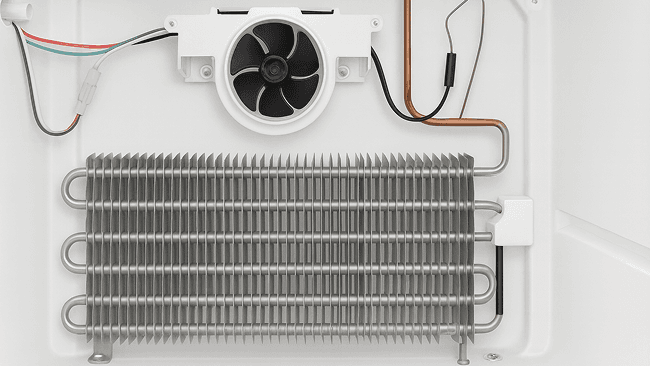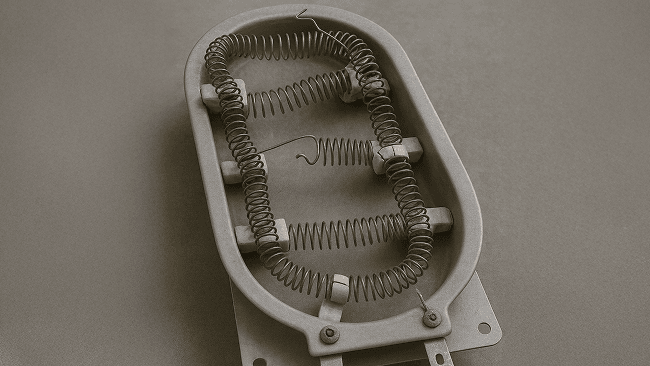GE SmartHQ: Diagnosing Fridge Cooling Issues
So I have the Smart HQ service app loaded to my iPad, and of course, for time purposes, I've already connected the Bluetooth module to this refrigerator right over here. We're gonna diagnose this unit that our tenant is saying that it, that has some sort of problem in just a few minutes. Okay? You're gonna see.
Everything in real time. So for that I'm gonna do a split screen view over here. And everything that I do on my iPad is gonna be in real time on on your end. Okay. So the first thing I wanna do over here is I wanna look at the fault codes. Okay? I wanna find out if there's anything wrong with this unit to begin with.
So you could see the fault code icon there. It's got a little number three. The three. So that means that there's threefold coats. So if I click on that, it tells me that I have, let's shrink these. It tells me that I have a two active coats, which means those are the ones that really do have a problem and one inactive coat.
So let's look at the active coats first. The first one is the fresh food or FF fresh food. It's missing the feedback. Okay. In other words, the fresh food is not sending signal to the main control board that it's spinning. So right away I can see that there may be a problem with that fan. The other code that I see is I have a thermistor problem with my ice maker freezer.
Okay? So that's two fault codes that I can see right away that. Could be affecting the performance of this refrigerator. Just with that information, my friends, you can, this points you in the right direction, but let's take it a step further. The other thing I wanna do is assess the temperature values of the fridge, right?
How it's cooling or not, depending on what I see on my Smart HQ service application here. In this particular instance, what I saw in the resident notes was that the fridge is not cooling properly, but it doesn't tell me where, or it's not telling me the ice cream is melting or the milk is spoiling, it just says not cooling properly, whatever that means.
So for me to know, I need to measure the internal temperature valleys, and that's really easy. We're gonna press the uh, button over here. It's the upper right hand corner, and that's gonna give me all of my thermistor values, right? So you can see right there all my thermistor values in Fahrenheit. And right away I can see that my fresh food thermistor, in other words, my fresh food compartment is at a whopping 58 degrees that is excessively high for a refrigerator compartment.
It shouldn't be like that. It should be around 37, 38 degrees or so. But my freezer thermistor is at minus. Four degrees Fahrenheit. So again, without using any tools, without taking that, you know that little infrared thermometer that you open the doors. And you should don't do that because as soon as you open the doors, you're letting all the warm air get inside and it's throwing off your temperatures completely.
So with this Smart HQ service tool, you can see all the internal temperature values in a matter of seconds, and without having to open the doors, without using any tools, no multimeters, nothing. It's just straight up information. Ready for you to utilize. Now the other thing I can see here is that my evaporator thermistors, right, so the fresh food and the freezer evaporator thermistors are at minus three degrees, 3.74, 3.91.
So they are cold, right? So I don't suspect the sealed system problem here. I suspect that there's maybe an issue with that fan, okay? Because again, the fault code told me that there was a fan. Problem. A fan fault code. So in order for me to check that, I'm gonna put the unit into service mode. But remember how I'm gonna say cumbersome?
It was to get into the service mode for the dishwasher, you had to press a key code sequence, open the door, close it, all that. We're not gonna do any of that. Okay? All we're gonna do is we're gonna take our application, and I'm gonna press just a couple buttons here to activate the service mode instead of going into the user interface and again, manually entering a key code sequence.
So to do that, we're gonna hit the back arrow key. We're gonna go to diagnostic functions right over here, and you can see that there's a few different things, right? There's notification, cycle history, info settings, load status, operate loads. That is a button that we're gonna press, operate loads, and that allows me to operate any load in the refrigerator, whether it's my fans, my heater, my compressor, my ice maker, whatever I wanna do.
I'm gonna be able to do that with Smart HQ service. So to enter service mode, it's very simple. All we need to do is press a little button down here that says Enter service mode. We click that and now we are in service mode. And the way that I know we're in service mode is take a look at this. If I look at the door, the inside of the refrigerator, the lights are out.
The reason the lights are out is because I have full control of this appliance with my. Mobile device in this case, right? My iPad, the unit doesn't have control of itself. I have control of it. And whatever I tell it to do, it's gonna do it. So one of the first things I want to check is just the lights, okay?
This is a really good way to show you visually how this works. So we're gonna go to doors and lights. All right? And then we are going to turn on the fresh food LEDs, and you're gonna see that the LEDs are immediately gonna come up when I hit the on button. So on. And there's my lights right there. Okay.
My LEDs came on, and then of course if I want to turn off the LEDs, all I have to do is press the off key. There they are. The E Ds shut off. And then we're gonna go ahead and close the door. Alright, so again, this is, this was just a quick visual demonstration of how, when you enter service mode, how you can activate components individually.
And just like I was able to turn on those LEDs and turn them off, I'm able to turn on the fans, the heaters, the compressor, everything. So, so remember that I had a fault code related to the fresh food fan. I want to test. Every fan in this unit make sure that they're all working. So to do that, we're gonna go back to fans and we're going to, we have the option to turn each one of them individually, or we can turn them all on at the same time.
So I'm gonna go. And go ahead and activate them all. So I'm gonna say all fans on and take a look at what happens over here, my friends. Okay. This is very important that you, that you notice this. First and foremost, you notice that the load status changes from off to high. And the reason why it changes to high is because we are running all these fans at a high speed.
All right? So we're running 'em at the maximum speed possible. Now you notice that below the load status there's also a an RPM reading revolutions per minute. So what this means is that the fan. For this particular one, the Freezer Evaporator fan is spinning at, let me go ahead and take a look. 2,482 RPMs Great.
And if we look at the Condenser fan, it's spinning at 1500 or so RPMs, but take a look at the Fresh Food Evaporator fan. Even though the main board is pumping voltage to it to spin at high speed, we're still getting zero RPMs, which indicates there's a problem with that fan. So bingo right then and there.
I know right away that the problem with this refrigerator, the problem, the reason why it's not cooling efficiently is because my fresh food fan is not spinning. And remember, without proper airflow, you won't have efficient cooling. So. Just using this tool, I'm able to tell that the fan is the issue. If I wanna double check and make sure 100% that it's not the main board and it's the fan, here's what I can do.
I can go ahead and shut off the fan, just that one fan, right? I'll leave the other ones running, but I'm gonna turn off that fresh food evaporator fan, and then I'm gonna try to run it again at a different speed just to make sure that the main board is capable of outputting the proper voltage to run the fan.
So in this case, I'm gonna run it at medium speed. Just because that's what I wanna choose and what I'm expecting to see. If my main board is good, I'm expecting to see that load status change from off to medium or MED. I think it's gonna show. So let's go ahead and do that. So the load status is off and now I can see that it is medium.
Okay. And that's a beautiful thing because what this is telling me is that the main board is good, so I don't have to replace that expensive main board. If anything, the only problem with this unit is the fan, and that's all I have to replace. So what that means for you, my friends, is that with this tool, you're gonna be able to pinpoint exactly which part you need so that you're not guessing.




